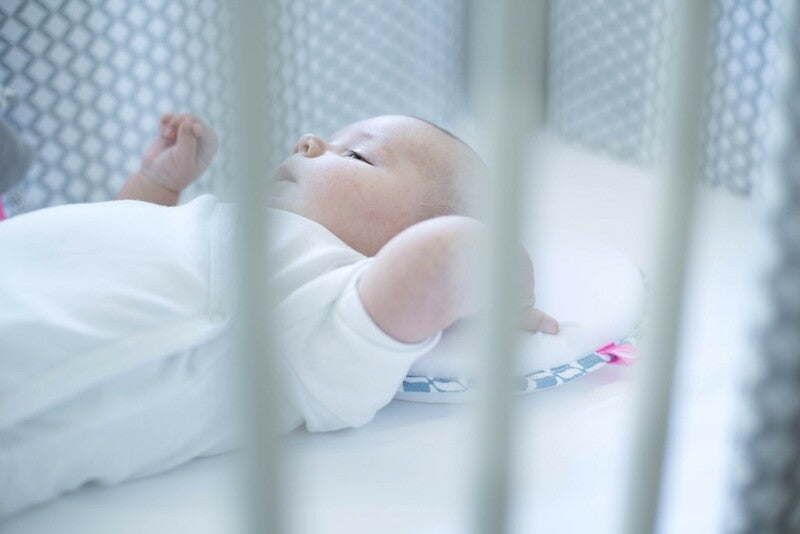Asthma in children: symptoms, causes and treatment.
Asthma is a common long-term lung condition that requires ongoing management. Asthma causes sensitivity to the airways, which can become inflamed and narrow with exposure to certain triggers, leading to difficulty breathing.
Asthma symptoms commonly begin in childhood, but it is possible to develop asthma at any age. This condition cannot be cured, but with a good plan of action, asthma can be well controlled.
Asthma in children: symptoms
Symptoms of asthma differ from person to person and can come and go, but you can have one or more of the following symptoms:
Signs and symptoms of asthma in children include:
A cough that does not go away (which may be the only symptom)
Coughing fits often, especially during play or exercise, at night, in cold air, or while laughing or crying
A cough that gets worse after a viral infection
· Less energy while playing and pausing to catch your breath during activities
· Avoid sports or social activities
Disturbed sleep due to cough or breathing problems
· Rapid breathing
Chest tightness or pain
Wheezing, a whistling sound when inhaling or exhaling
Swinging movements in the chest (retractions)
·Shortness of breath
· Tight neck and chest muscles
Feeling of weakness or tiredness
Difficulty eating
These symptoms can also be caused by other conditions, so if you suspect you have asthma you should see your GP.
What Happens in an Asthma Attack?
In an asthma attack, the muscles around the airways can swell and become inflamed with increased mucus production resulting in one or more of the following symptoms:
Difficulty in breathing
· Difficulty speaking
Wheezing
Blue color of the lips
Feeling of distress
Things that can increase a child's chances of having asthma include:
Nasal allergies (hay fever) or eczema (allergic skin rash )
· Many respiratory infections
· Low birth weight
· Exposure to secondhand tobacco smoke before or after birth
Managing an asthma attack
Here's what to do when an asthma attack comes
Immediately give 1 puff of the asthma inhaler, repeating 1 puff as needed every 30-60 seconds, up to a maximum of 10 puffs
Try to remain calm and sit upright (this allows you to breathe easier)
If you feel worse or do not feel better after 10 puffs call an ambulance (this ensures that medical assistance is on the way)
If the ambulance takes more than 15 minutes to arrive, repeat step 1
Outside air quality and why it matters
Air pollution is the leading environmental risk to human health and the fourth largest public health threat after cancer, heart disease and obesity. It makes people more susceptible to respiratory infections and other diseases and can have a significant impact on those living with allergies.
There is a proven link between the quality of the air we breathe and the health of people living with disease allergies. Sensitivity to the negative effects of air pollutants will vary from individual to individual and air pollution levels will also vary seasonally, from day to day.
It is necessary to limit the contact with the triggers: some foods that generate allergies, pet hair (dog, cat, horse), conditions of the internal environment (mites, humidity / mold, cigarette smoke, paints, strong odors) or external (pollen, cold / humid climate, pollution), airway infections represent the major risk factors for asthmatic children. It is important to avoid and prevent them to reduce the possibility of flare-ups.
Changing certain lifestyle behaviors can help fight asthma. In particular, a sedentary lifestyle and exposure to both passive and active smoking in asthmatic adolescents should be avoided. Any sporting activity can be carried out by adopting preventive behaviors such as a pre-medication with a short-acting bronchodilator to control exercise-induced bronchodilation.
Treatment of asthma
Based on your child's history and the severity of the asthma, the doctor will develop a treatment plan, called an asthma action plan. This describes:
When and how your child should use asthma medications
· What to do when asthma gets worse
When to seek emergency care.
Make sure you understand this plan and ask your child's doctor any questions you may have.
Your child's asthma action plan is important for controlling asthma. Keep it handy to remind you of your child's daily management plan and to guide you when your child has asthma symptoms. Distribute copies to assistants, teachers, and even your child's bus driver so they know what to do if the child has an asthma attack away from home.
In addition to following your child's asthma action plan, you want to make sure that exposure to asthma triggers is limited and preferably avoided.
There are two main types of asthma medications:
Quick-relieving drugs help with sudden symptoms. Your child will get them for quick help during an asthma attack.
Long-acting drugs prevent inflammation of the airways and control asthma. Your child will likely take them every day. If a newborn or older child has asthma symptoms that require treatment with a bronchodilator drug more than twice a week during the day or more than twice a month at night, most doctors recommend daily anti-inflammatory medications.
Many asthma medications contain steroids, which may have side effects. They can irritate your child's mouth and throat. Some research shows that over time they could cause slow growth, bone problems, and cataracts. After your child takes them, his body may not be able to make as many natural steroids. But without treatment, asthma can lead to health problems and hospital visits. You and your doctor should talk about the pros and cons of medications when making an asthma action plan.
Dear mothers, after reading our article we recommend that you take a look at our Luxurykids website where you will find many items for your child.






Leave a comment